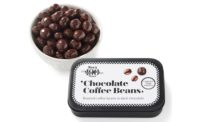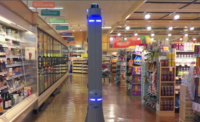Restaurants are probably going to face another year of disappointing growth, as dining frequency is expected to drop slightly or remain flat over the next 12 months, says a survey of 1,000 U.S. adults by business-advisory firm AlixPartners LLP. Restaurants that are no longer able to count on growth solely by opening new locations are experiencing a new reality in which they will need more strategic brand differentiation, innovation in marketing and continued cost management.
The survey indicates that this year, growth will be achieved through tough competition for market share across and within segments of the restaurant industry. The survivors will be those who have a firm hold on the key drivers and influencers of consumers' dining choices, and those that start targeted programs to help drive growth in an uncertain environment, according to Adam Werner, managing director at AlixPartners and co-lead for the firm's Restaurant & Foodservice practice.
The firm’s annual survey review monitored consumers' anticipated dining behavior and the drivers of dining choice across the core restaurant segments: Quick service (QSR); fast casual; casual; fine dining; and convenience stores. The study also looked at the financial performance and fiscal health of more than 75 restaurants and nine foodservice companies representing approximately $200 billion in annual revenue and one-third of the overall industry.
The restaurant industry has struggled through the past few years as consumers who continue to lack confidence in both the overall economy and their personal situations cut back on discretionary spending. Fierce price competition across and within all segments, coupled with spikes in most major commodity costs, made for a continuing difficult operating environment in 2011.
Winning restaurants saw incremental revenue gains by scrutinizing their balance sheets and cutting waste while focusing on customer demand for healthy, high-quality food. Several chains also looked to mergers and acquisitions, store redesigns and international expansion for their growth. In fact, a key trend was brand differentiation and consumer relevance to drive revenue growth.
Meanwhile, the past year saw convenience stores increase their focus on quality food and beverage offerings, and consumers noticed. Across all segments, the c-store segment was the only one to see an increase in traffic. Significantly, the survey also found that c-stores are evolving into a destination for buying food. In the survey, 46% of consumers visited c-stores to buy a meal.
"You can expect a lot more than a hot dog and a slushy from convenience stores today. The creative ones are now offering made-to-order sandwiches, improved coffee and tea programs, and even items like sushi," says Kurt Schnaubelt, a director at AlixPartners. "Both QSR and fast casual need to recognize the c-store threat and will need to up their innovation to protect against further encroachment."
Source: www.cspnet.com
Recommended Articles
Related Articles
×
Keep the info flowing with our eNewsletters!
Get the latest industry updates tailored your way.
JOIN TODAY!Copyright ©2024. All Rights Reserved BNP Media.
Design, CMS, Hosting & Web Development :: ePublishing






